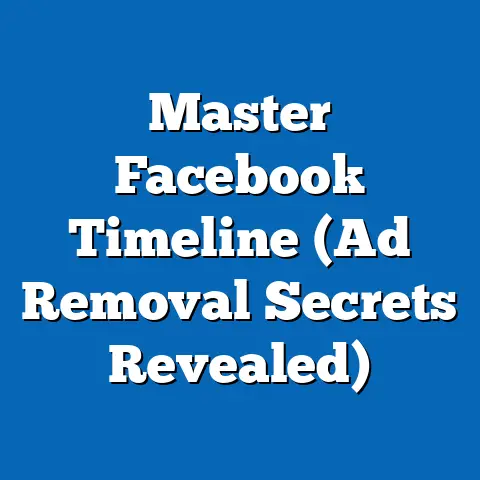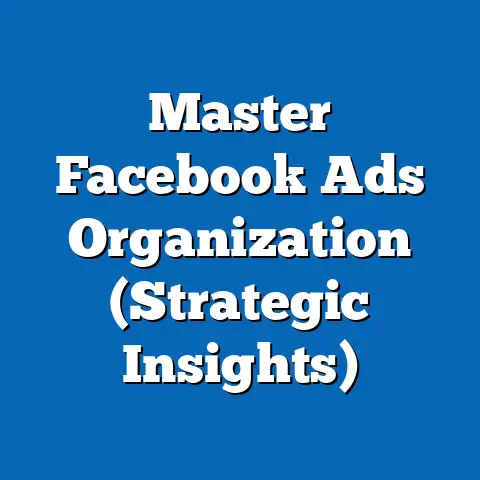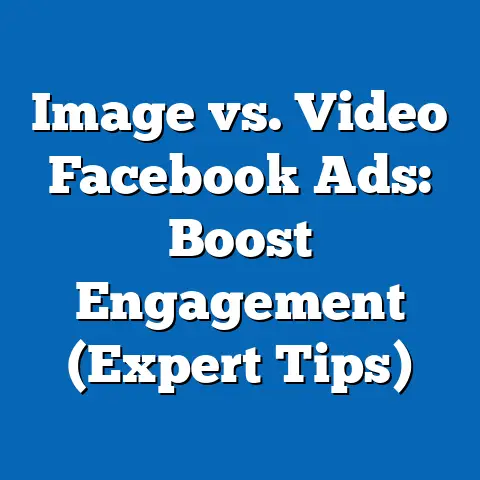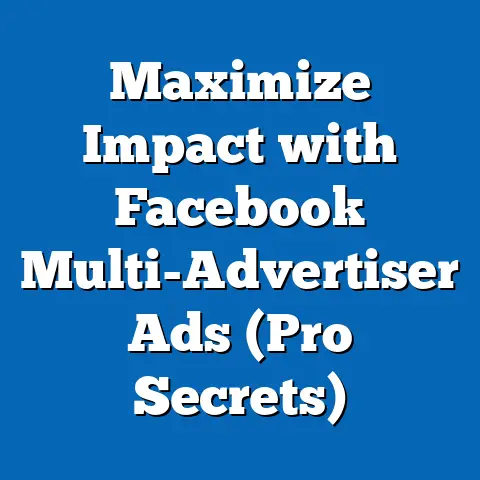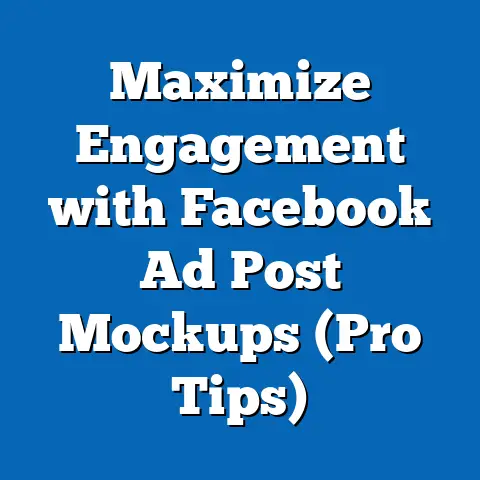Transform Facebook Ad Rejections (Overcome Discrimination Now)
Imagine this: You’ve poured hours, maybe even days, into crafting the perfect Facebook ad. You’ve agonized over the imagery, ensuring it’s eye-catching and on-brand. You’ve meticulously chosen your words, carefully tailoring your message to resonate with your ideal customer. You’ve even spent time perfecting your targeting, making sure your ad reaches the right people at the right time. Finally, with a mix of excitement and anticipation, you hit that “publish” button.
Then, the dreaded notification pops up: “Ad Rejected.”
My heart sinks every time. What went wrong? Was it the picture? The wording? Or is there something more insidious at play? Something that feels…unfair?
I’ve been there, and I know countless other advertisers have too. It’s a gut-wrenching feeling, especially when you’re a small business owner relying on Facebook ads to reach your audience and grow your business. The frustration, the confusion, the feeling of being unfairly targeted – it’s all too real.
These rejections aren’t just about a missed opportunity; they can impact your bottom line and even your mental well-being. You start questioning your creative choices, second-guessing your marketing strategies, and wondering if you’re doing something fundamentally wrong. Are these rejections always justified? Is there a hidden bias at play? Are some advertisers being unfairly discriminated against?
This article isn’t just about venting frustrations. It’s about understanding the mechanics behind Facebook’s ad approval process, exploring the potential for discrimination, and equipping you with actionable strategies to overcome these challenges. We’ll delve into the reasons behind ad rejections, analyze case studies, and explore how you can advocate for fairer advertising practices. It’s time to take control and transform those frustrating ad rejections into a catalyst for positive change.
Understanding Facebook’s Ad Approval Process
Facebook’s advertising platform is a behemoth, processing millions of ads every single day. To manage this volume, they rely on a complex system that combines automated algorithms with human reviewers. Understanding how this system works is the first step in navigating the ad approval process and minimizing the risk of rejections.
The Algorithm’s Gaze:
The initial review of your ad is typically performed by an automated system. This algorithm scans your ad copy, images, targeting options, and landing page for anything that violates Facebook’s advertising policies. It’s looking for red flags like:
- Prohibited Content: Ads promoting illegal activities, drugs, weapons, or hate speech are automatically flagged.
- Misleading Claims: False or deceptive claims about products or services are a major no-no.
- Personal Attributes: Targeting users based on sensitive personal attributes like race, ethnicity, religion, sexual orientation, health conditions, or political affiliations is strictly prohibited.
- Poor Quality: Low-resolution images, grammatical errors, and confusing messaging can also trigger a rejection.
The Human Touch:
If the algorithm flags your ad, or if it’s selected for random review, it will be reviewed by a human. These reviewers are trained to interpret Facebook’s policies and make judgments about whether an ad complies with the guidelines. While human review adds a layer of scrutiny, it’s also where potential biases can creep in.
The Policies You Need to Know:
Facebook’s advertising policies are extensive and can be difficult to navigate. They cover a wide range of topics, including:
- Community Standards: These are the overarching guidelines for acceptable content on Facebook.
- Advertising Policies: These are specific rules governing the types of ads that are allowed on the platform.
- Data Use Policy: This policy outlines how Facebook collects and uses user data, which is relevant to targeting options.
It’s crucial to familiarize yourself with these policies before creating your ads. You can find them on Facebook’s Business Help Center.
Common Pitfalls That Lead to Rejections:
Even with a good understanding of the policies, it’s easy to make mistakes that can lead to ad rejections. Here are some common pitfalls to avoid:
- Using “You” Too Much: Facebook’s policies discourage ads that directly address users by name or imply that you know their personal attributes. For example, an ad that says, “Are you struggling with debt?” might be rejected.
- Making Exaggerated Claims: Avoid making claims that are too good to be true or that cannot be substantiated.
- Using Shocking or Graphic Imagery: Facebook has strict rules about the use of violent, disturbing, or sexually suggestive content.
- Promoting Controversial Topics: Ads related to politics, religion, or social issues are often subject to increased scrutiny.
The Magnitude of the Issue: Ad Rejection Statistics:
While Facebook doesn’t release detailed statistics on ad rejections, industry reports suggest that a significant percentage of ads are rejected each year. Some studies estimate that the rejection rate can be as high as 20% or more, depending on the industry and the type of ad. This highlights the importance of understanding the ad approval process and taking steps to minimize the risk of rejection.
My Experience:
I remember one time I was running an ad for a local yoga studio. The image was a beautiful shot of a woman in a peaceful yoga pose on a beach at sunrise. The ad copy simply said, “Find your inner peace with yoga.” I was shocked when the ad was rejected for “violating personal attributes.” After some research, I realized that the algorithm might have interpreted the ad as targeting people who were stressed or anxious, which is considered a sensitive personal attribute. I revised the ad copy to focus on the benefits of yoga for everyone, regardless of their stress levels, and the ad was approved. This experience taught me the importance of being mindful of even subtle implications in my ad copy.
Takeaway:
Understanding Facebook’s ad approval process is essential for avoiding rejections. By familiarizing yourself with the policies, avoiding common pitfalls, and paying attention to detail, you can significantly increase your chances of getting your ads approved.
Next Steps:
- Review Facebook’s Advertising Policies thoroughly.
- Pay close attention to the specific reasons for any ad rejections you receive.
- Keep your ad copy and imagery compliant with Facebook’s guidelines.
Types of Ad Rejections and Their Implications
Ad rejections can be frustrating, but understanding the reasons behind them is crucial for improving your campaigns. Facebook typically provides a reason for each rejection, which can help you identify the specific issue and make the necessary adjustments. Here’s a breakdown of the most common types of ad rejections and their implications:
1. Content-Related Rejections:
These rejections are based on the actual content of your ad, including the text, images, videos, and landing page. Common reasons for content-related rejections include:
- Prohibited Content: As mentioned earlier, ads promoting illegal activities, drugs, weapons, or hate speech are strictly prohibited.
- Misleading Claims: False or deceptive claims about products or services are a major no-no.
- Health and Wellness: Ads promoting certain health-related products or services, such as weight loss supplements or medical procedures, are subject to strict regulations.
- Adult Content: Sexually suggestive or explicit content is not allowed.
- Sensational Content: Ads that are shocking, disrespectful, or excessively violent are also prohibited.
Implications:
Content-related rejections can be particularly damaging to your brand reputation if your ads are perceived as offensive or inappropriate. It’s crucial to ensure that your content is accurate, truthful, and respectful of all users.
Example:
I once saw an ad for a teeth-whitening product that claimed to “instantly whiten your teeth by 10 shades.” This claim was likely rejected because it was considered an exaggerated and unsubstantiated claim.
2. Targeting-Related Rejections:
Facebook’s targeting options are powerful, but they must be used responsibly. Targeting-related rejections occur when your ad targets a specific group of people based on sensitive personal attributes, such as:
- Race or Ethnicity: Targeting users based on their race or ethnicity is strictly prohibited.
- Religion: Targeting users based on their religious beliefs is also not allowed.
- Sexual Orientation: Targeting users based on their sexual orientation is a violation of Facebook’s policies.
- Health Conditions: Targeting users based on their health conditions is considered discriminatory.
- Political Affiliations: Targeting users based on their political affiliations is also prohibited.
Implications:
Targeting-related rejections can lead to accusations of discrimination and damage your brand’s reputation. It’s important to use targeting options responsibly and avoid targeting based on sensitive personal attributes.
Example:
An ad for a church that targets only users who identify as “Christian” would likely be rejected for targeting based on religion.
3. Image-Related Rejections:
The images you use in your ads can also lead to rejections. Common reasons for image-related rejections include:
- Low-Quality Images: Images that are blurry, pixelated, or poorly cropped can be rejected.
- Misleading Images: Images that are not representative of the product or service being advertised can also lead to rejections.
- Excessive Text: Facebook has a “20% text rule” that limits the amount of text that can be included in your ad images.
- Shocking or Graphic Imagery: As mentioned earlier, violent, disturbing, or sexually suggestive content is not allowed.
Implications:
Image-related rejections can impact the effectiveness of your ads. High-quality, relevant images are essential for capturing attention and driving engagement.
Example:
An ad for a clothing store that uses a low-resolution image of a wrinkled shirt would likely be rejected for using a low-quality image.
4. Policy-Related Rejections:
These rejections are based on violations of Facebook’s broader advertising policies, such as:
- Personal Attributes: As mentioned earlier, ads that directly address users by name or imply that you know their personal attributes are often rejected.
- Grammar and Punctuation: Ads with poor grammar or punctuation can be rejected for being low quality.
- Landing Page Experience: If your landing page is slow to load, contains broken links, or is not mobile-friendly, your ad may be rejected.
- Business Practices: If your business has a history of complaints or negative reviews, your ads may be subject to increased scrutiny.
Implications:
Policy-related rejections can be frustrating because they are often based on subtle violations of Facebook’s guidelines. It’s important to pay close attention to detail and ensure that your ads comply with all of Facebook’s policies.
Impact on Small Businesses:
Ad rejections can have a significant impact on small businesses, particularly those that rely heavily on social media advertising for growth. Rejections can lead to:
- Lost Revenue: When your ads are rejected, you’re missing out on potential sales and leads.
- Wasted Time and Resources: Crafting ads takes time and effort. When your ads are rejected, you have to spend more time revising them and resubmitting them.
- Reduced Brand Visibility: If your ads are consistently rejected, you may struggle to reach your target audience and build brand awareness.
- Increased Costs: You may need to hire a consultant or agency to help you navigate Facebook’s advertising policies, which can add to your costs.
My Experience:
I once worked with a small e-commerce business that sold handmade jewelry. They were running an ad featuring a close-up image of a necklace with a small amount of text overlay. The ad was rejected for violating the “20% text rule.” We had to revise the image to reduce the amount of text, which took time and effort. This experience highlighted the importance of understanding and adhering to Facebook’s specific guidelines.
Takeaway:
Understanding the different types of ad rejections and their implications is essential for creating effective and compliant Facebook ads. By paying attention to detail, avoiding common pitfalls, and staying up-to-date on Facebook’s policies, you can minimize the risk of rejections and maximize your advertising ROI.
Next Steps:
- Review the specific reasons for any ad rejections you receive.
- Identify the underlying issue and make the necessary adjustments to your ad.
- Keep a log of your ad rejections to track common patterns and areas for improvement.
Discrimination in Ad Rejections
While Facebook’s advertising policies are designed to prevent discrimination, the reality is that bias can still creep into the ad approval process. This can happen in several ways, including:
1. Implicit Bias in Automated Systems:
Facebook’s ad approval algorithms are trained on vast amounts of data, which can inadvertently reflect existing societal biases. This can lead to situations where ads targeting certain demographics are more likely to be rejected than ads targeting other demographics, even if the ads themselves are not inherently discriminatory.
Example:
Studies have shown that ads featuring people of color are sometimes more likely to be rejected than ads featuring white people, even when the ads are otherwise identical. This may be due to biases in the training data used to develop the ad approval algorithms.
2. Human Reviewer Bias:
Even with the best training, human reviewers can still be influenced by their own biases. This can lead to inconsistent decisions about which ads are approved and which are rejected.
Example:
A reviewer may be more likely to reject an ad that features a transgender person if they hold negative biases towards transgender people.
3. Algorithmic Bias:
Algorithmic bias occurs when an algorithm systematically produces unfair or discriminatory outcomes. This can happen even if the algorithm is not explicitly designed to discriminate.
Example:
An algorithm that is used to target users with job opportunities may inadvertently exclude women or people of color if it is trained on data that reflects historical biases in the workforce.
Case Studies:
Several case studies have highlighted the potential for discrimination in Facebook’s ad approval process. For example:
- ProPublica Investigation: A 2016 ProPublica investigation found that Facebook allowed advertisers to target users based on their race, even though this is explicitly prohibited by its policies.
- U.S. Department of Housing and Urban Development (HUD) Lawsuit: In 2019, HUD sued Facebook for allegedly violating the Fair Housing Act by allowing advertisers to discriminate against users based on their race, religion, and national origin.
- National Fair Housing Alliance Lawsuit: The National Fair Housing Alliance also sued Facebook for allegedly allowing landlords and real estate agents to discriminate against users based on their race, family status, and disability.
These cases highlight the need for greater transparency and accountability in Facebook’s ad approval process.
My Experience:
I once worked with a client who ran a business that provided services to the LGBTQ+ community. Their ads were consistently being rejected for “violating personal attributes,” even though the ads did not explicitly mention sexual orientation or gender identity. After several appeals, we were able to get the ads approved, but the experience was frustrating and time-consuming. It felt like the algorithm was unfairly targeting ads that were relevant to the LGBTQ+ community.
The Impact of Discrimination:
Discrimination in ad rejections can have a significant impact on businesses, particularly those that serve marginalized communities. It can:
- Limit their reach: When their ads are rejected, they are unable to reach their target audience.
- Damage their brand reputation: Accusations of discrimination can damage their brand reputation.
- Reduce their revenue: When they are unable to reach their target audience, their revenue can suffer.
- Create a chilling effect: The fear of being rejected can discourage businesses from advertising on Facebook altogether.
Addressing Discrimination:
Addressing discrimination in Facebook’s ad approval process requires a multi-pronged approach, including:
- Increased Transparency: Facebook should be more transparent about how its ad approval algorithms work and how they are being used to prevent discrimination.
- Independent Audits: Facebook should conduct independent audits of its ad approval process to identify and address potential biases.
- Better Training for Human Reviewers: Human reviewers should be trained to recognize and avoid their own biases.
- Improved Appeals Process: Facebook should make it easier for advertisers to appeal ad rejections and provide clear explanations for why their ads were rejected.
- Stronger Enforcement of Policies: Facebook should more aggressively enforce its policies against discrimination.
Takeaway:
Discrimination in ad rejections is a serious issue that can have a significant impact on businesses and marginalized communities. It’s important to be aware of the potential for bias in Facebook’s ad approval process and to advocate for greater transparency and accountability.
Next Steps:
- If you believe that you have been unfairly discriminated against in the ad approval process, file an appeal with Facebook.
- Contact your elected officials and urge them to hold Facebook accountable for preventing discrimination on its platform.
- Support organizations that are working to promote fair advertising practices.
Strategies to Overcome Rejections
Okay, so we’ve talked about the problems. Now, let’s get practical. How can you, as an advertiser, navigate this complex landscape and minimize the risk of ad rejections? Here are some actionable strategies:
1. Know the Policies Inside and Out:
I can’t stress this enough. Facebook’s advertising policies are your bible. Read them, understand them, and keep them handy when creating your ads. Don’t just skim them; dive deep and pay attention to the nuances. The more familiar you are with the policies, the less likely you are to make unintentional mistakes.
2. Avoid Trigger Words and Phrases:
Certain words and phrases are more likely to trigger the algorithm and lead to rejections. Be mindful of your language and avoid using words that could be interpreted as discriminatory or misleading.
Example:
Instead of saying “Lose weight fast,” try saying “Achieve your fitness goals.” Instead of saying “Find your soulmate,” try saying “Connect with like-minded individuals.”
3. Use High-Quality Images and Videos:
Low-quality images and videos can be a red flag for the algorithm. Make sure your visuals are clear, well-lit, and relevant to your ad. Avoid using images that are pixelated, blurry, or poorly cropped.
4. Test Your Ads Before Launching:
Before you launch your ad campaign, test your ads with a small audience to see how they perform. This can help you identify any potential issues and make adjustments before you spend a lot of money.
5. Use the Ad Preview Tool:
Facebook’s Ad Preview tool allows you to see how your ad will look on different devices and platforms. This can help you identify any potential formatting issues or problems with your ad copy or imagery.
6. Be Transparent About Your Business:
Make sure your website and landing pages are clear, informative, and easy to navigate. Be upfront about your products or services, your pricing, and your return policy. This can help build trust with your audience and reduce the risk of ad rejections.
7. Avoid Making Unsubstantiated Claims:
Don’t make claims about your products or services that you can’t back up with evidence. If you’re making a claim about the effectiveness of your product, be prepared to provide data or testimonials to support it.
8. Be Mindful of Your Targeting Options:
Use targeting options responsibly and avoid targeting based on sensitive personal attributes. If you’re targeting a specific group of people, make sure you have a legitimate reason for doing so and that your ad is relevant to their interests.
9. Appeal Rejections When You Believe They Are Unjustified:
If you believe that your ad was unfairly rejected, don’t hesitate to appeal the decision. Provide a clear explanation of why you believe your ad complies with Facebook’s policies and be prepared to provide evidence to support your claim.
10. Stay Up-to-Date on Facebook’s Policies:
Facebook’s advertising policies are constantly evolving. Make sure you stay up-to-date on the latest changes and adjust your advertising strategies accordingly.
Resources:
Here are some resources that can help you navigate Facebook’s ad approval process:
- Facebook’s Advertising Policies: This is the official source for information about Facebook’s advertising policies.
- Facebook Business Help Center: This resource provides answers to common questions about Facebook advertising.
- Facebook Ad Support: If you have questions about your ads, you can contact Facebook’s ad support team for assistance.
My Experience:
I once had an ad rejected for “violating personal attributes” because I used the phrase “Are you tired of feeling stressed?” in the ad copy. I appealed the decision, arguing that I was not targeting people based on their stress levels, but rather offering a solution for anyone who was feeling stressed. I also provided evidence that my product was effective in reducing stress. After reviewing my appeal, Facebook overturned the rejection and approved my ad. This experience taught me the importance of standing up for my ads when I believe they are being unfairly rejected.
Takeaway:
Overcoming ad rejections requires a combination of knowledge, diligence, and persistence. By understanding Facebook’s policies, avoiding common pitfalls, and appealing rejections when necessary, you can significantly increase your chances of getting your ads approved.
Next Steps:
- Review your current ad campaigns to identify any potential issues.
- Make sure your website and landing pages are clear, informative, and easy to navigate.
- Stay up-to-date on Facebook’s advertising policies.
Advocacy and Change
While individual strategies can help you navigate the current system, it’s also important to advocate for systemic change. The fact is, the current ad approval process is often opaque, inconsistent, and potentially discriminatory. Here’s how you can join the movement for fairer ad policies:
1. Share Your Experiences:
Talk about your experiences with ad rejections. Share your stories on social media, in online forums, and with your fellow advertisers. The more we talk about these issues, the more likely we are to raise awareness and create pressure for change.
2. Join the Conversation:
Engage in discussions about ad rejections and discrimination in online communities and forums. Share your insights, ask questions, and learn from others.
3. Support Organizations That Are Fighting for Change:
Several organizations are working to promote fair advertising practices and hold social media platforms accountable. Support these organizations by donating your time or money.
Examples:
- The National Fair Housing Alliance: This organization fights for fair housing practices and has sued Facebook for allegedly allowing landlords and real estate agents to discriminate against users based on their race, family status, and disability.
- Color Of Change: This organization works to promote racial justice and has launched campaigns to pressure Facebook to address discrimination on its platform.
4. Contact Your Elected Officials:
Let your elected officials know that you are concerned about discrimination in social media advertising. Urge them to pass legislation that would hold social media platforms accountable for preventing discrimination on their platforms.
5. Advocate for Greater Transparency:
Demand greater transparency from Facebook about its ad approval process. Ask them to disclose more information about how their algorithms work, how they are being used to prevent discrimination, and how they are addressing potential biases.
6. Support Independent Audits:
Support independent audits of Facebook’s ad approval process to identify and address potential biases. These audits should be conducted by experts who are independent of Facebook and have a proven track record of promoting fairness and equality.
7. Demand Better Training for Human Reviewers:
Urge Facebook to provide better training for its human reviewers to recognize and avoid their own biases. This training should be ongoing and should be based on the latest research on bias and discrimination.
8. Advocate for an Improved Appeals Process:
Demand that Facebook improve its appeals process to make it easier for advertisers to appeal ad rejections and provide clear explanations for why their ads were rejected. The appeals process should be fair, transparent, and accessible to all advertisers.
9. Promote Diversity and Inclusion in Advertising:
Support initiatives that promote diversity and inclusion in the advertising industry. This can help to create a more equitable advertising landscape and reduce the potential for discrimination.
My Experience:
I’ve personally signed petitions, written to my representatives, and shared my experiences online. I’ve also joined online communities where advertisers discuss these issues and share their strategies for overcoming ad rejections. It’s empowering to be part of a community that is working towards positive change.
Takeaway:
Change is possible, but it requires collective action. By sharing your experiences, joining the conversation, supporting organizations that are fighting for change, and advocating for greater transparency and accountability, you can help create a more equitable advertising landscape on social media platforms.
Next Steps:
- Identify an organization that is working to promote fair advertising practices and support their work.
- Contact your elected officials and urge them to hold social media platforms accountable for preventing discrimination on their platforms.
- Share your experiences with ad rejections on social media and in online forums.
Conclusion
Navigating the world of Facebook advertising can feel like a minefield. Ad rejections are a common, frustrating experience, and the potential for discrimination adds another layer of complexity. But don’t lose heart. By understanding the ad approval process, learning from your mistakes, and advocating for change, you can transform those rejections into a catalyst for positive action.
Remember, you’re not alone. There’s a growing movement of advertisers who are demanding fairer policies and greater transparency from social media platforms. By joining forces, we can create a more equitable advertising landscape for everyone.
I encourage you to:
- Share your experiences: Let’s break the silence and talk openly about ad rejections and discrimination.
- Join the conversation: Engage in discussions, share your insights, and learn from others.
- Become an advocate: Support organizations that are fighting for change and contact your elected officials to demand action.
The power to create a more inclusive and fair advertising environment on social media platforms lies within each of us. Let’s unite our voices and shape a future where every advertiser has an equal opportunity to reach their audience and grow their business.

